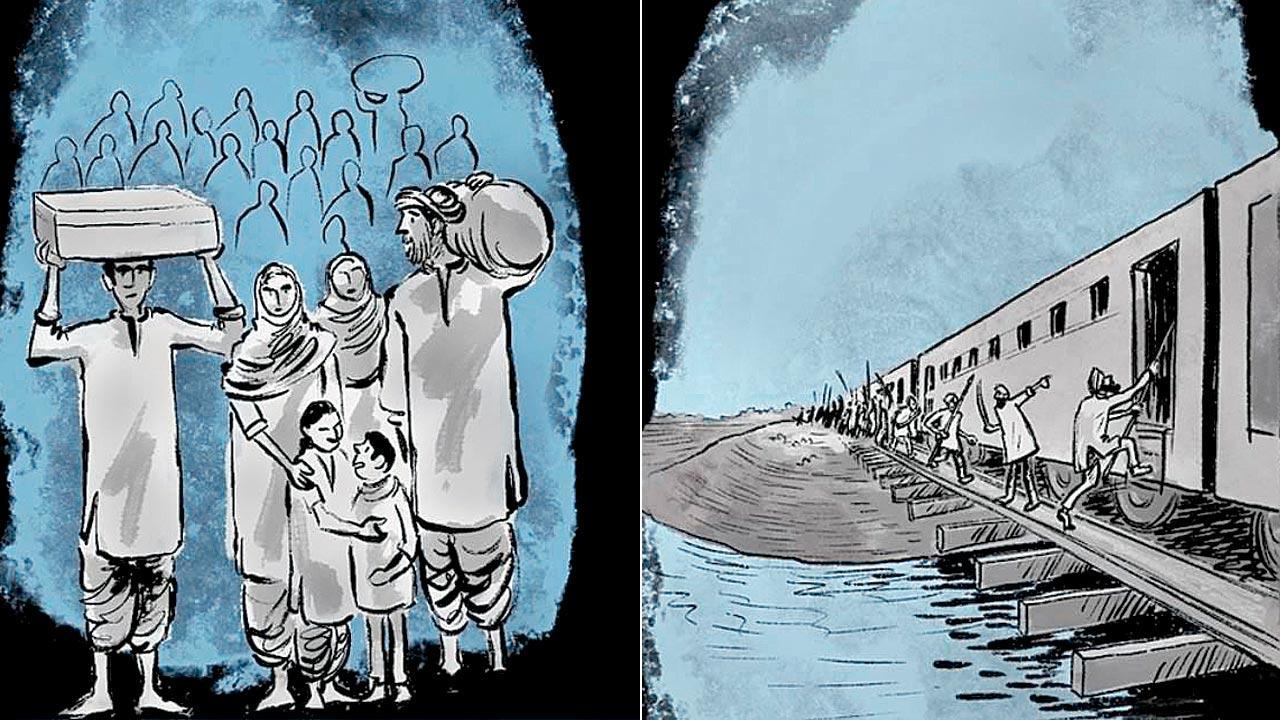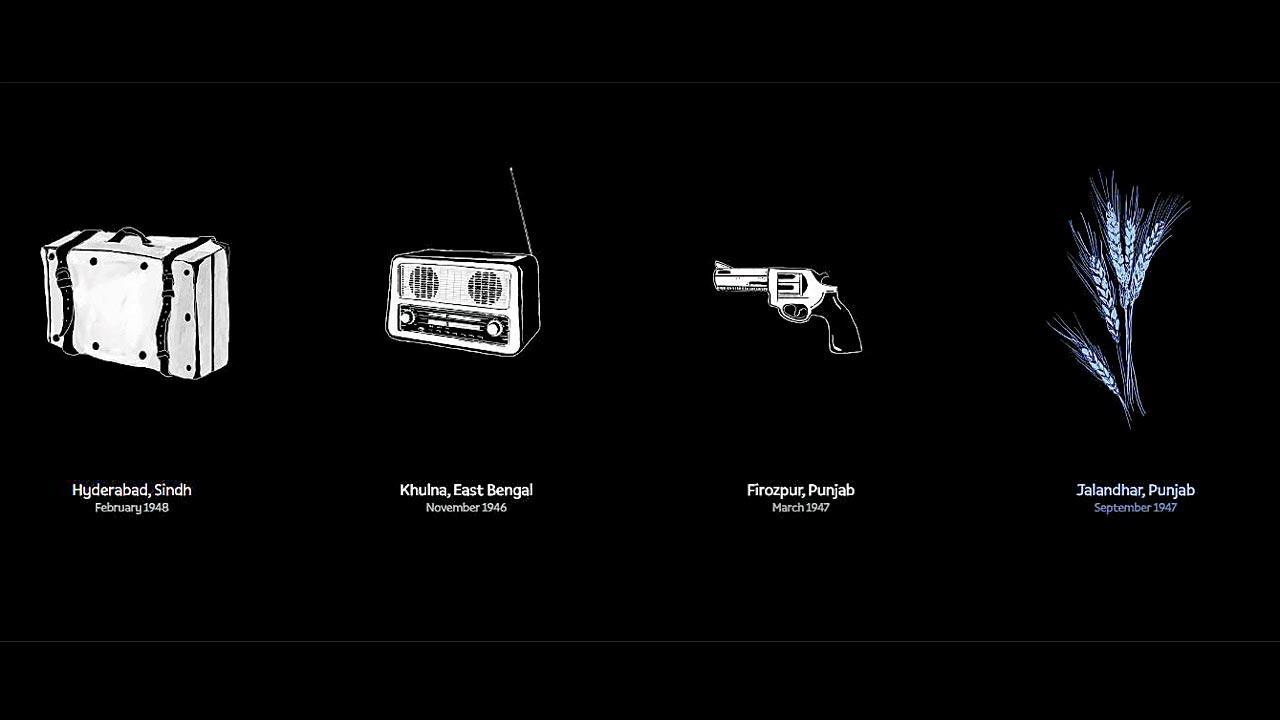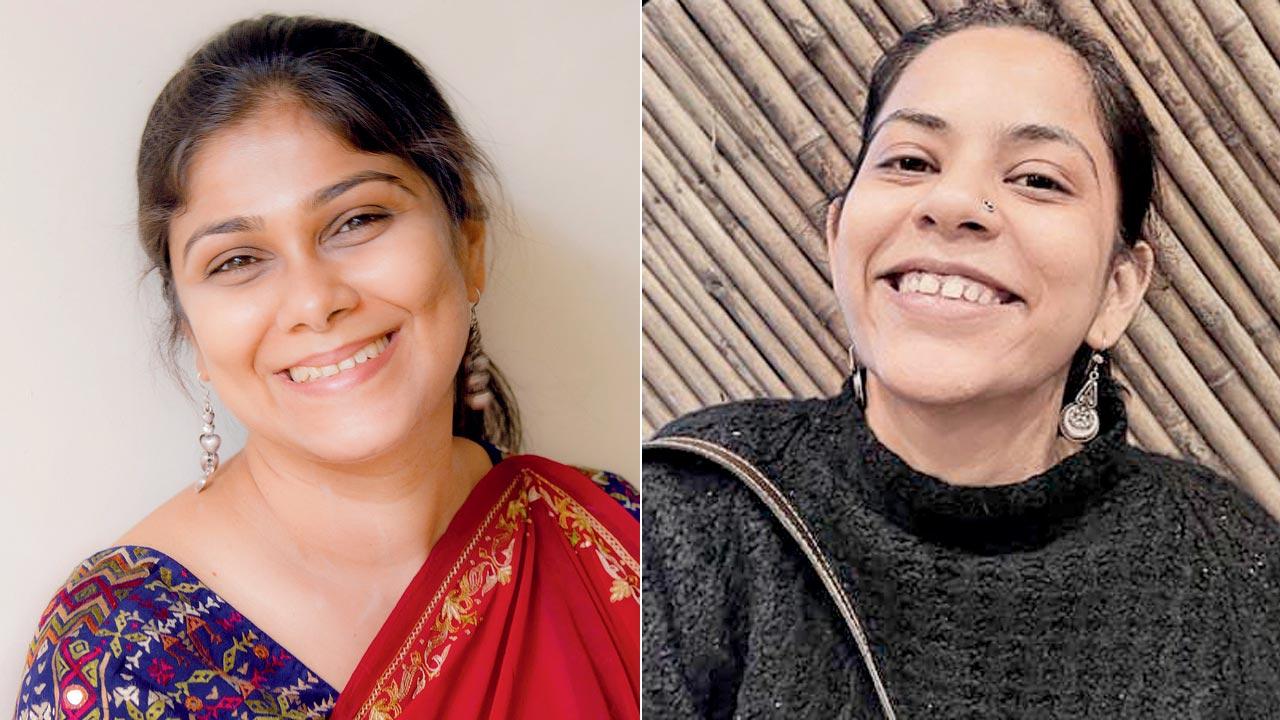As India battles the traumas of new divisive wounds, a virtual exhibit on the Partition carries warnings and lessons from the past

Illustrated scenes of survivors; (right) a moment from a riot
One of the most potent descriptions of the newly independent Subcontinent lies in the lines by poet Faiz Ahmed Faiz, who wrote, “Woh intezaar tha jiska/Yeh woh sehar toh nahin” (The dawn we waited for/ It is not this). Titled Subh-e-Azadi (Dawn of Independence), the poem epitomised the tragedy of religious and sectarian violence that followed the Independence of India and Pakistan in 1947.
ADVERTISEMENT
The virtual exhibition of Un.Divided Identities: Lesser Known Stories of the Partition by ReReeti Foundation seeks to explore this complex history of the Subcontinent through a curated walkthrough of stories by survivors of the Partition. Created in partnership with The British Council and Glasgow Life Museums under the Our Shared Cultural Heritage (OSCH) initiative, the project is part of a digital archive that aims to educate a younger generation about the complex history of the time.
 An illustrated frame preceding the four stories. Pics Courtesy/Nikhil Gulati and Shaunaq Madan
An illustrated frame preceding the four stories. Pics Courtesy/Nikhil Gulati and Shaunaq Madan
The team invested six months to research and produce the experiential project, reveals Bhanu Ghalot, project head. She says, “Over the last two decades, Partition scholars have invested time in shifting the gaze with which this history is viewed, retelling it through the eyes of witnesses, and reclaiming the agency of narration. However, the learning of this history remains stagnant in classroom settings, and usually emphasises nationalist narratives.” The exhibition was an attempt to change this.
A curation of four stories from across the worst affected provinces of pre-Independence India — Bengal, Sindh and Punjab — the exhibition offers insight into the moral dilemmas and tragedies witnessed by the survivors. It does so by forcing you to make the choice for the protagonists. In the face of moral dilemmas such as saving a neighbour, or a child in need of help over one’s own safety, you realise the psychological torment that also plagued the survivors. The moving illustrations and a well-produced soundscape add to the experience.
 Tejshvi Jain and Bhanu Ghalot
Tejshvi Jain and Bhanu Ghalot
The production is a conscious attempt to evoke empathy in the reader, says project director Tejshvi Jain. “They had to make difficult choices as well. We wanted to bring out that dilemma. We wanted to create stories that were based on facts and at the same time highlight the internal and external conflicts around the people,” she remarks.
The project relied on three theories of educational philosophy — Howard Gardner’s multiple intelligence theory, Neil Fleming’s VARK model and object-based learning — to embed its lessons into students. “It is not just by showing horrific descriptions that one creates empathy. Empathy can also mean understanding the internal turmoil which people had to go through to make decisions and survive. Students could relate to the uncertainties of our times post pandemic and we built on this to give them a deeper understanding of the nuances of the historical event that still influence our identity, decisions and perspectives,” Jain says.
One is forced into heartbreak at every step, and share the trauma of Dr Sitaram as he chooses to stay on in a divided Punjab or the fears of Rajnandini and the Roychowdhurys as they find a way past Khulna in East Bengal. The stories were also picked using markers, shares Ghalot. These markers included mode of transport, region, class and privilege and gender to showcase the uniformity of the horror.
As one faces the rise of majoritarianism in India, the exhibit serves as a reminder that sectarian violence hurts all. There is no one community that emerges unscathed or unscarred. Ghalot shares, “The most apparent complexity of this history is that there are no clear victims for the violence that unfolded. People who were victims of the violence were also its perpetrators.”
Nuanced, balanced and well-researched, the exhibition provides an experience that can help young minds escape the radical thoughts that surround them. “In the last few decades, great strides have been made to record memories of people who witnessed this history and to systematically archive them. This has allowed all of us to gain agency over this history. I think it is time now to think of what we can do with these archives, and how we can make it engaging for generations to come. This exhibition stands at that intersection, and is an attempt at curatorial experimentation,” Ghalot observes.
Log on to link.tree/rereetifoundation
 Subscribe today by clicking the link and stay updated with the latest news!" Click here!
Subscribe today by clicking the link and stay updated with the latest news!" Click here!







